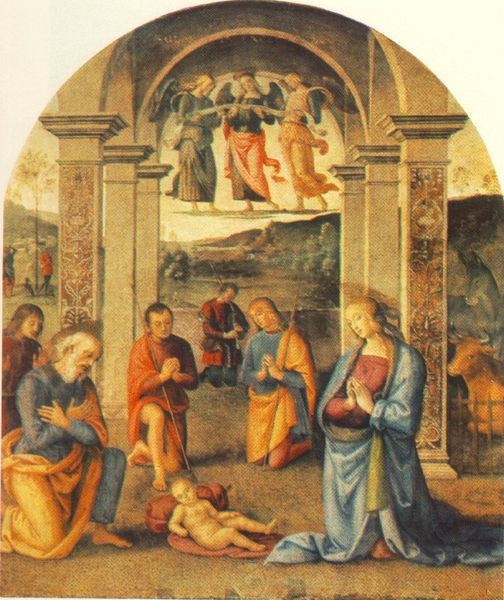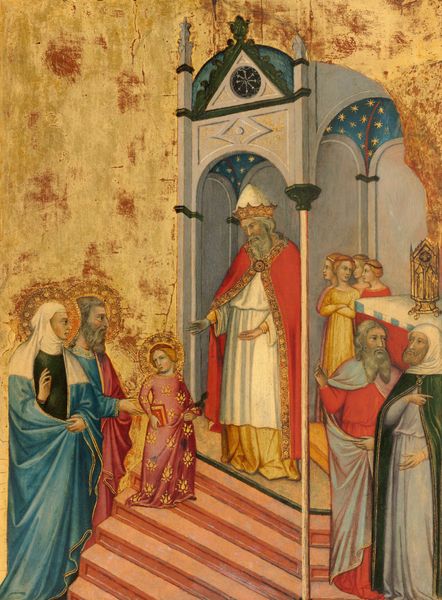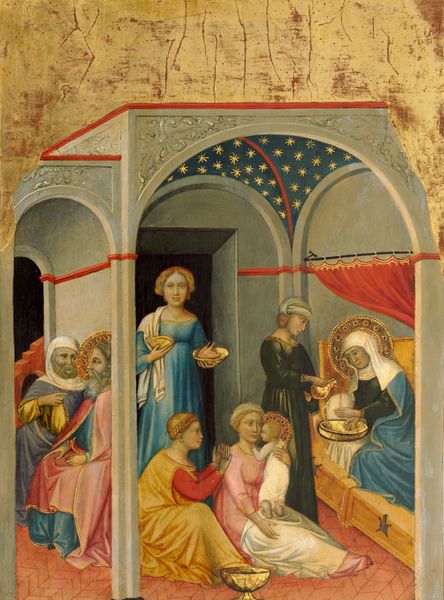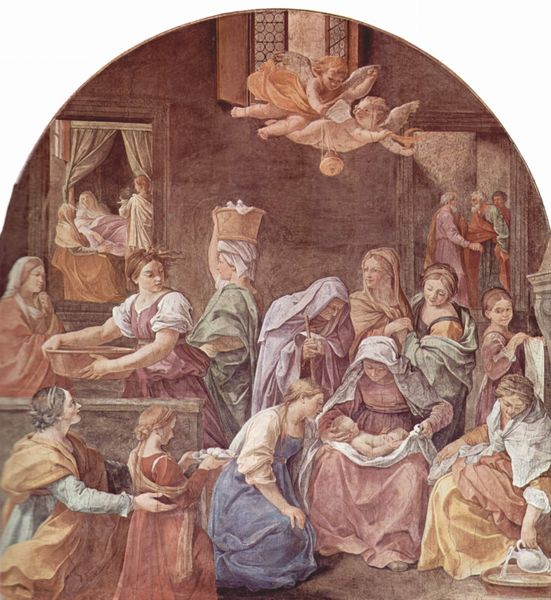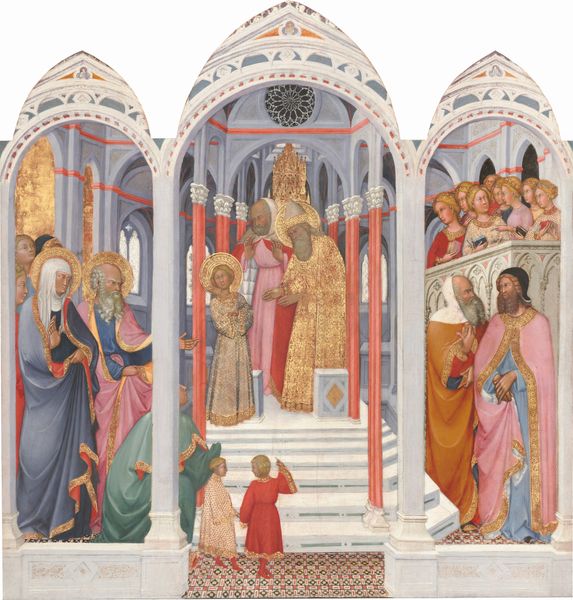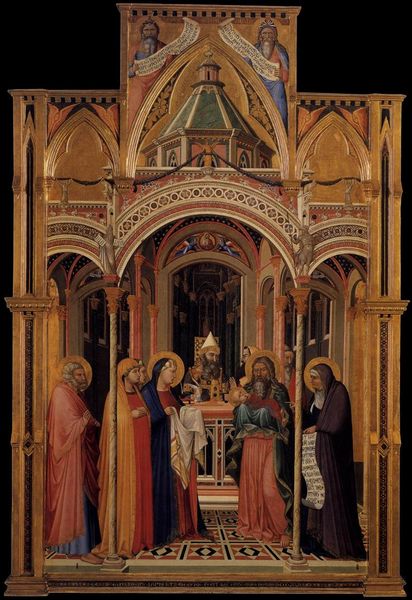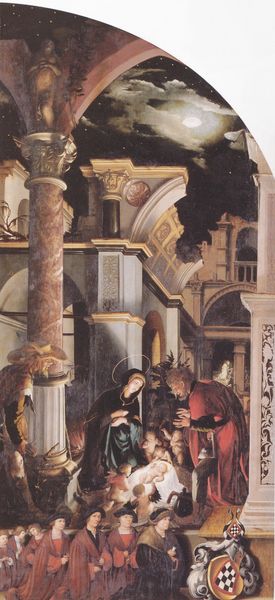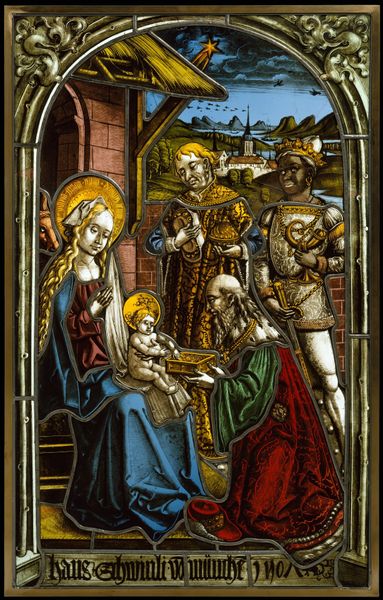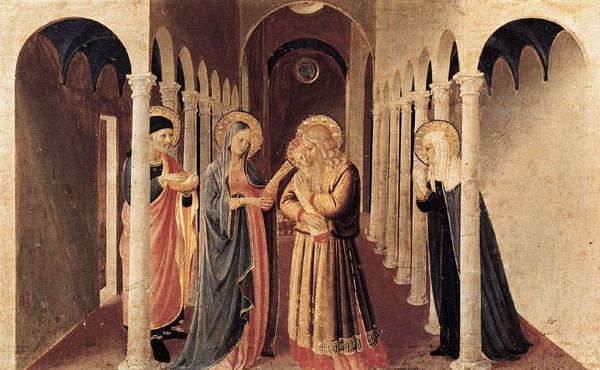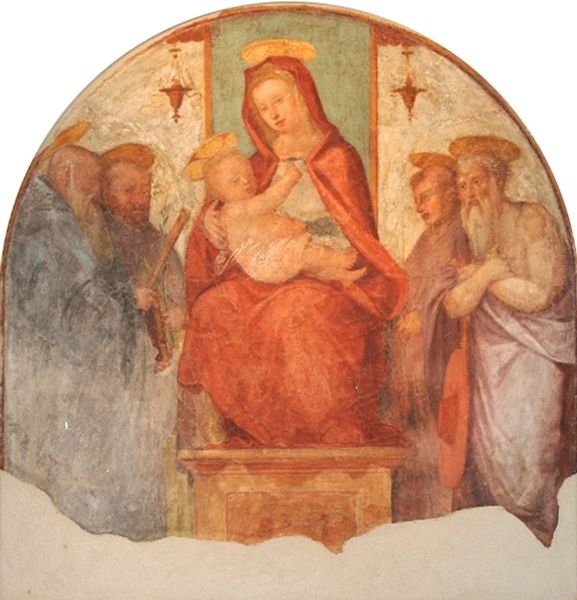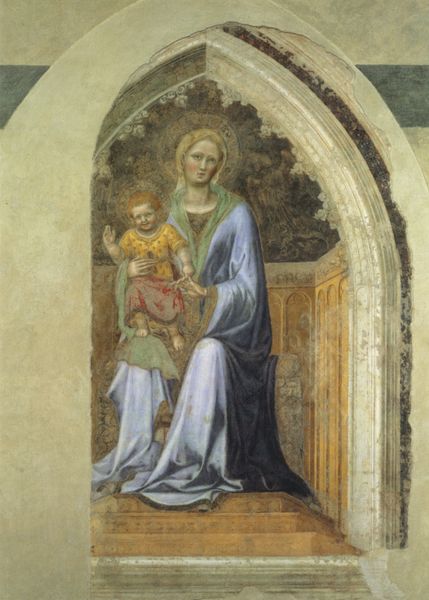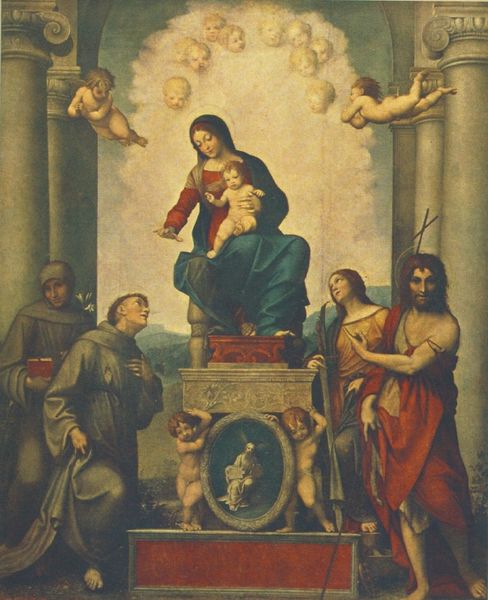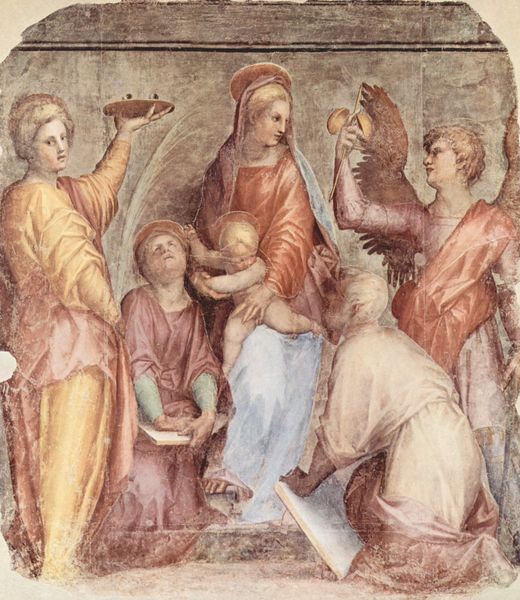
tempera, painting, oil-paint, fresco
#
portrait
#
tempera
#
painting
#
prophet
#
oil-paint
#
landscape
#
holy-places
#
figuration
#
fresco
#
child
#
christianity
#
painting painterly
#
genre-painting
#
history-painting
#
academic-art
#
italian-renaissance
#
christ
Dimensions: 421 x 236 cm
Copyright: Public domain
Curator: This is Vittore Carpaccio's "Presentation in the Temple," painted around 1510. The medium looks like tempera or perhaps a mix incorporating oil, and it seems to display that moment in the early life of Christ. Editor: My first impression is of a rather somber, stage-like scene, despite the soft, pastel-like colours. There’s something very formal and deliberate about the arrangement of figures and the architectural space. Curator: Yes, consider that the pigments would have been locally sourced and hand-ground, mixed painstakingly with egg yolk to achieve the matte, luminous quality we see. It reflects the labour involved in artistic production at the time and how it tied into commerce in the region. Editor: Absolutely, but it's equally interesting to think about the Temple as a symbol itself, signifying not only the physical holy space, but also representing established religion and tradition that Christ both fulfills and challenges. Note, too, the contrast in clothing: the austere robes of the figures on the left against the elaborate vestments of the priest. What statements are being made there? Curator: I think understanding the guilds Carpaccio worked within also highlights something about this visual symbolism, such choices in composition were almost standardized at the time and highlight some element of control. His patrons were undoubtedly aware of how different materials might reflect status or create associations in the public imagination. Editor: Certainly, and the figures themselves contribute to the layers of symbolic interpretation. Consider the wise elders juxtaposed with the youth of Mary and Christ – each representing different eras and perspectives on faith and tradition. Even the presence of musicians, seemingly secular, points to a more festive interpretation beyond a strictly religious rite. Curator: Right, to add to this, the perspective itself. If you observe the labor expended by the artist to render this specific vanishing point, from which the scene unfolds and displays everyone neatly, it allows for a more even engagement, making sure no material is too focused on while also emphasizing different subjects. Editor: Indeed, I think this work uses its iconography and historical symbolism to deliver a profound, contemplative, and multilayered message about faith and its transmission. Curator: And that's cleverly reflected, as you mention, by his manipulation and engagement of physical materials available at his disposal. Interesting how different those aspects can affect each other in history.
Comments
No comments
Be the first to comment and join the conversation on the ultimate creative platform.
